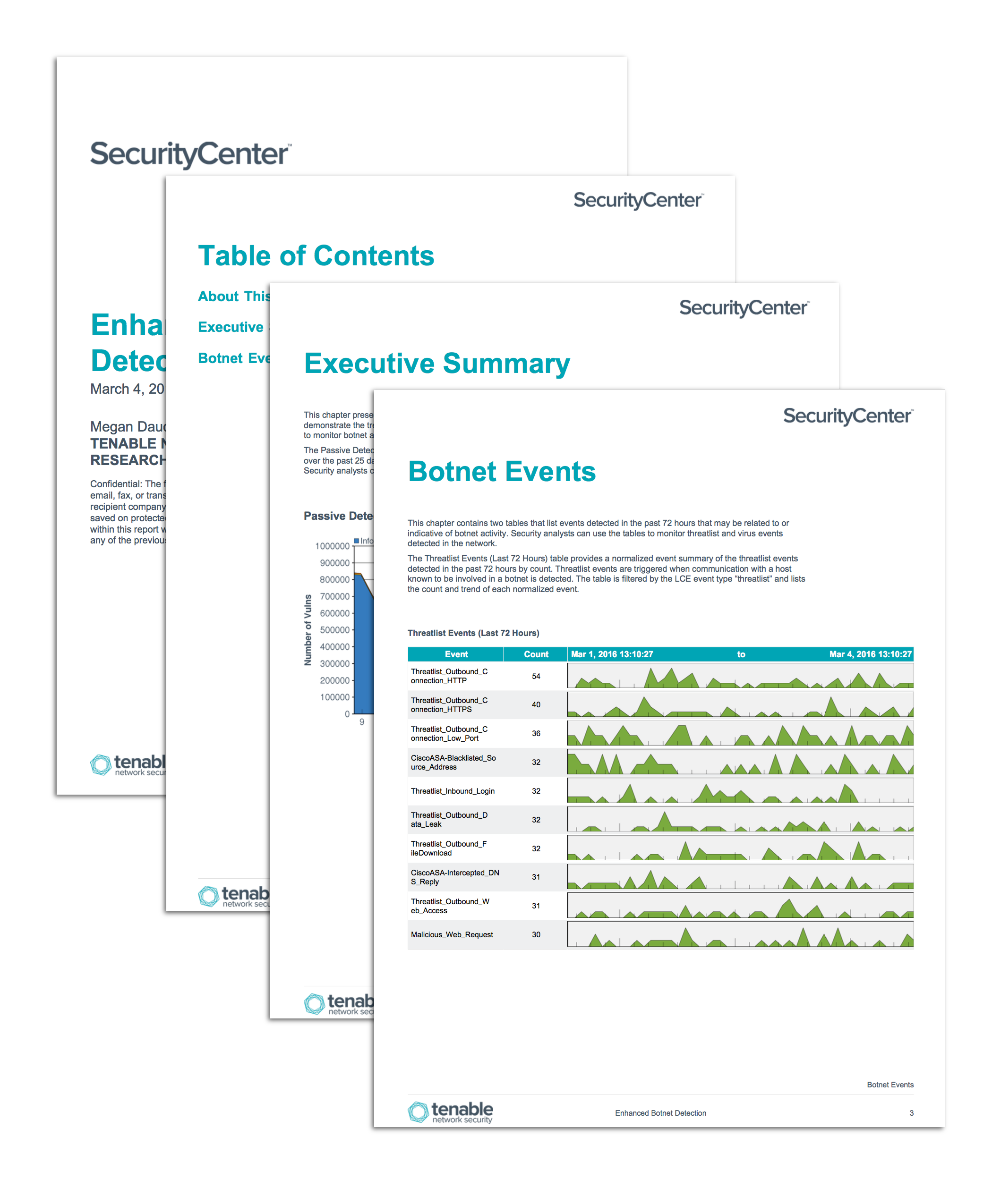by Megan Daudelin
April 4, 2016

Securing an environment against botnet activity is essential to network integrity. If a host is being exploited by a botnet, other hosts and data in the same network are especially vulnerable. SecurityCenter integrates with Nessus, the Log Correlation Engine (LCE), and the Passive Vulnerability Scanner (PVS) to identify and monitor botnet activity in the network.
The Enhanced Botnet Detection report assists security teams with monitoring the network for activity related to botnets. Specific events and plugins are used to identify potential botnet activity and the hosts involved. Detailed information about hosts with indicators of botnet activity is provided, along with trend data about botnet vulnerabilities over time. Event data is filtered to focus on threatlist and virus events, both possibly indicative of botnet activity. Indicator matrices alert on suspicious activity potentially related to botnet activity. By monitoring the network for botnet activity, security teams can more effectively ensure network integrity and security.
The chapters in the Enhanced Botnet Detection report present events, hosts, and vulnerabilities that are possibly related to botnet activity. Matrices show indicators of potentially malicious or suspicious activity. Tables list events and hosts with detected activity related to botnets. Trend charts illustrate the presences of botnet-related vulnerabilities over time by severity and plugin. Each element can be modified to focus on subnets or systems of particular concern. Organizations can use the information provided to better monitor events and vulnerabilities potentially indicative of botnet activity.
This report is available in the SecurityCenter Feed, a comprehensive collection of dashboards, reports, Assurance Report Cards, and assets. This report can be easily located in the SecurityCenter Feed under the category Threat Detection & Vulnerability Assessment. The report requirements are:
- SecurityCenter 4.8.2
- Nessus 6.5.4
- LCE 4.6.0
- PVS 4.4.0
- This report requires “Full Text Search” to be enabled for each analyzed repository.
SecurityCenter Continuous View (CV) provides continuous network monitoring, vulnerability identification, risk reduction, and compliance monitoring. Nessus is continuously updated with information about advanced threats and zero-day vulnerabilities, and new types of regulatory compliance configuration audits. The Passive Vulnerability Scanner (PVS) performs deep packet inspection to enable discovery and assessment of operating systems, network devices, hypervisors, databases, tablets, phones, web servers, cloud applications, and critical infrastructure. The Log Correlation Engine (LCE) performs deep log analysis and correlation to continuously discover and track systems, applications, cloud infrastructure, trust relationships, and vulnerabilities. By integrating with Nessus, PVS, and LCE, SecurityCenter CV’s continuous network monitoring is able to detect events and vulnerabilities across the enterprise.
The following chapters are included in this report:
- Executive Summary: This chapter presents a high-level overview of botnet activity detection on the network. Two charts demonstrate the trend of detected botnet activity over the past 25 days. Security analysts can use the charts to monitor botnet activity over time for spikes or changes.
- Botnet Events: This chapter contains two tables that list events detected in the past 72 hours that may be related to or indicative of botnet activity. Security analysts can use the tables to monitor threatlist and virus events detected in the network.
- Botnet Vulnerabilities: This chapter contains two tables that present information about hosts with botnet activity detections during the past seven days. Security analysts can use the tables to identify hosts that may be involved in a botnet.